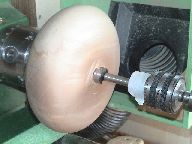 |
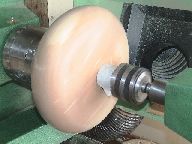 |
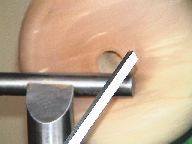 |
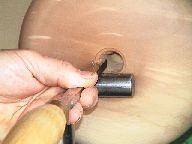 |
| With the largest drill bit
available, (saw tooth forsterner bits ideal) mark your required depth on
the drill shank or chuck with some masking tape.
With hard woods a series of increasing diameter holes may be needed to
reduce heat and loads.
|
Drill to marked depth.
(Small drill used here for demonstration.)
|
Use either of the following tools
to open up the bore.
Narrow stiff (thick) Flat Scraper
or
Shallow Ground Bowl Gouge with straight across grind.
|
With the Scraper plunge cut the
bore in small partial width cuts. |
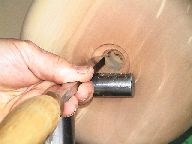 |
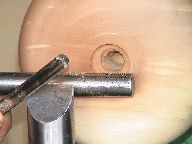 |
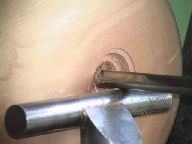 |
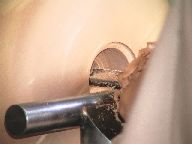 |
| Slowly increasing the diameter. |
Alternately do the same with the
Bowl Gouge. |
Hold the Gouge with the Left Hand
cutting flute pointing at 9 O'Clock.
|
Just make sure that the Gouge
does not rotate anti-clockwise so that the Right hand flute catches. |
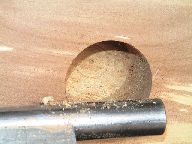 |
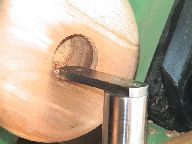 |
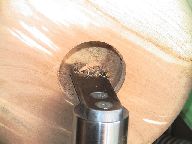 |
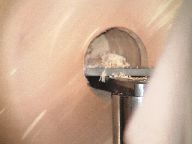 |
| Proceed to remove successive plunge
cuts until desired diameter is reached. |
If the bore is deep enough that
you are starting to get loss of control due to tool overhang then do the
depth in stages using a suitable tool rest to provide support. |
To finish off internal shaping or
hollowing move the rest as far in as possible to reduce the tool
overhang. |
Here I am using a simple
1/2" Round Nosed scraper which may be all that is needed for a Vase.
In fact because this Horse Chestnut was easy to cut the whole thing was
hollowed to less than 1cm wall with a scraper.
|
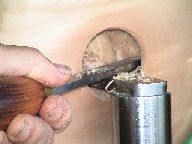 |
|
|
|
| Because I'm fortunate enough to
be able to reverse my lathe I can work from a more comfortable position. |
|
Be prepared to spend more time
removing shavings than actually cutting.
Avoid them building up and fouling your tools, causing the
equivalent of a catch.
|
|